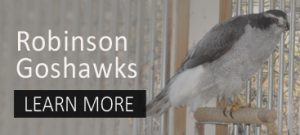In the earlier days of falconry, a falconer would rely on the faint sounds of a bell to locate a bird out hunting or flying. Thankfully, advances in technology have helped to develop a more reliable and convenient system for modern falconers—radio telemetry.
It can sometimes be difficult to learn the ropes of new and more advanced tools. So, let’s take a closer look at how radio telemetry equipment is used in the field.
How does radio telemetry work?
Radio telemetry is essentially just a way to track your raptor electronically. A transmitter is attached to the bird that puts out a frequency on a radio channel. The falconer has a receiver turned to that same channel that reads the frequency. Telemetry equipment can help you more easily locate a bird who is hunting, out flying, has been chased, or that has otherwise flown away.
How do I attach a transmitter to my bird?
There are several different transmitter mounting methods, all with their own advantages and disadvantages. The method used often just depends on the preference of the falconer and the type of raptor. Here are the most commonly used mounts:
Leg Mount
A transmitter is attached to an anklet around the bird’s leg. This is the most common method, particularly for larger raptors.
Tail Mount
A mount piece is secured to the top or underside of one of the deck feathers and the transmitter clips in.
Neck Mount
An elastic band or tie is attached to a transmitter and placed over the bird’s neck like a necklace. The band material must be breakable for the safety of the raptor.
Back Mount
Also called a “backpack”. A mounting plate is attached to a harness made of ribbon that is fitted to the bird. The transmitter attaches to the mount.
How do I use a receiver to locate my bird?
When you turn on your receiver, you will hear the signal from your bird’s transmitter (be sure to check that your receiver and transmitter are working before you release your bird). Turn slowly, holding the receiver at level horizontally, and listen for when the signal gets loudest. This is the direct signal, meaning you are on the same plane as your raptor. Work towards the direct signal until you reach your bird. Reading signals takes a little practice, as you’ll have to learn how to sort out interference.
At Mike’s Falconry Supplies, we carry all of the radio telemetry equipment you need for all of the top systems in falconry. Mounts, transmitters, receivers, antennas, carry cases, even batteries—we have everything you need right in our online store.
Place your order for delivery today or contact our team with any questions about our equipment!

 "A USA Company
"A USA Company







